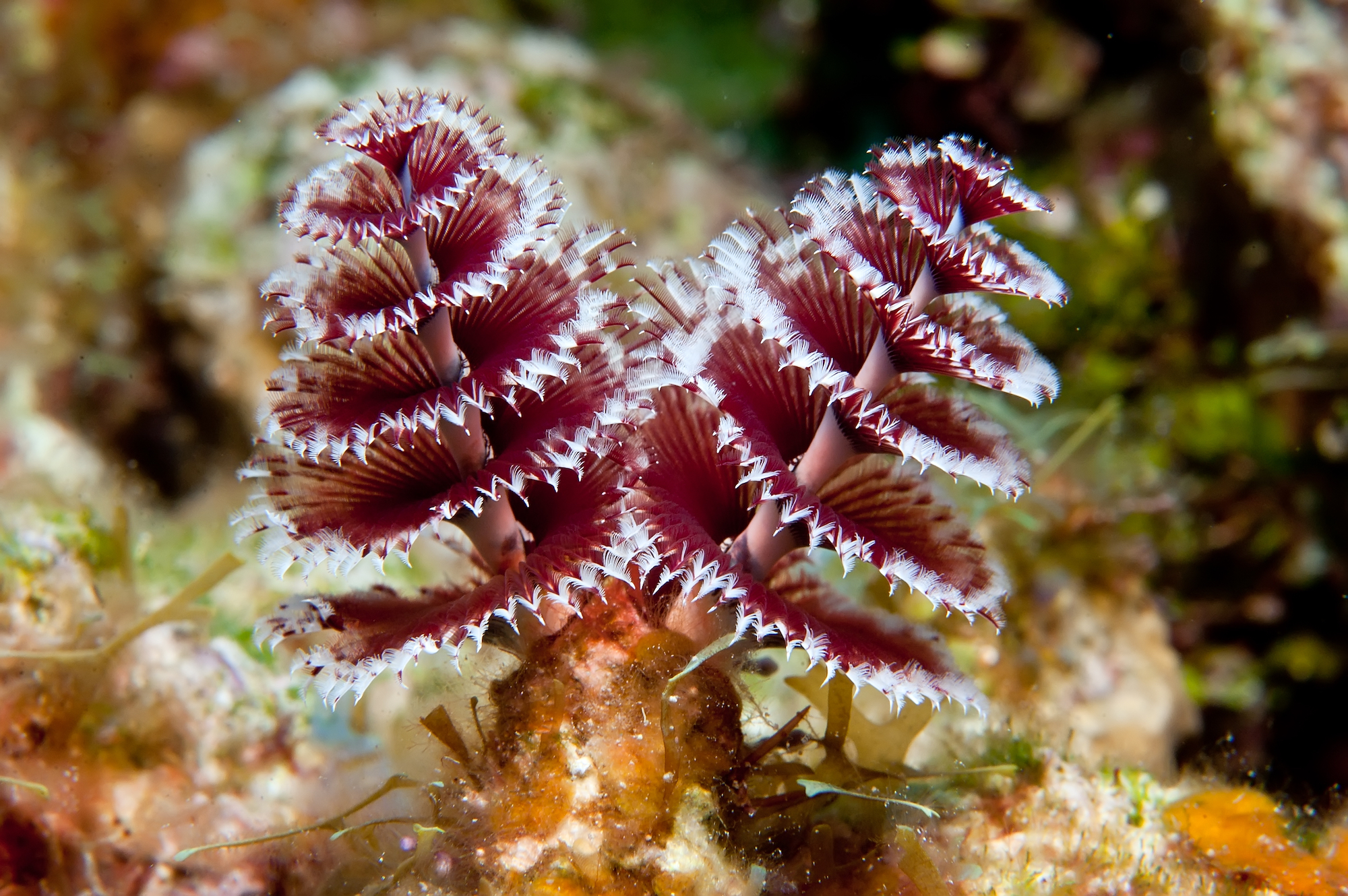These unique little creatures may be some of the most festive animals in the ocean. They look like Christmas trees when they fan out and come in all sorts of colors.
Christmas tree worms are often found in shallow tropical reefs where they’ll attach themselves to a coral and build a calcium carbonate tube body. Then, they’ll burrow into the coral a little so that they don’t risk floating away. Once they’ve settled down they’ll stay on the same coral their entire lives (usually about 10-20 years).
These worms have crowns that come out of of their tube shaped body and are covered in tiny little hairs called radioles that allow the organism to breathe and eat. Yes, the hairs are tiny, but it’s all they need to prey on things like microscopic plants and phytoplankton. I can’t imagine feeling full after such a small meal.
How do they reproduce? It’s actually very simple. When its reproduction season the males releases the sperm into the water and the females releases the eggs. The currents carry them until they make contact and fertilization happens. The larvae will then live off of plankton by floating around for the first hours to weeks of their lives and then settle down on their own coral, build their tube, and repeat.
When these little guys get frightened they retreat into their tube bodies at a very impressive speed (see the video below). And when they want to open back up they’ll stick out a bit of their hairs to sense if the danger is gone, and then they’ll slowly open back up.
Although they’re very small, these organisms are helpful to coral reefs and have a very important role to play. They protect the corals from invasive species, prevent the growth of algae, and help reefs recover from from coral bleaching.
Learning about these extraordinary critters really makes you wonder what else is out there.
Facts:
– Scientific Name: Spirobranchus giganteus
– Prey: phytoplankton
– Predators: sea urchins, crab, shrimp, reef fish
– Size: about 1.5 inches
– Life Span: up to 40 years

(Oceana)

